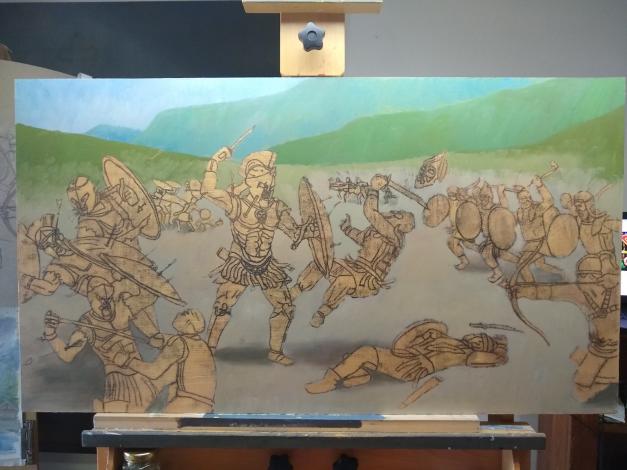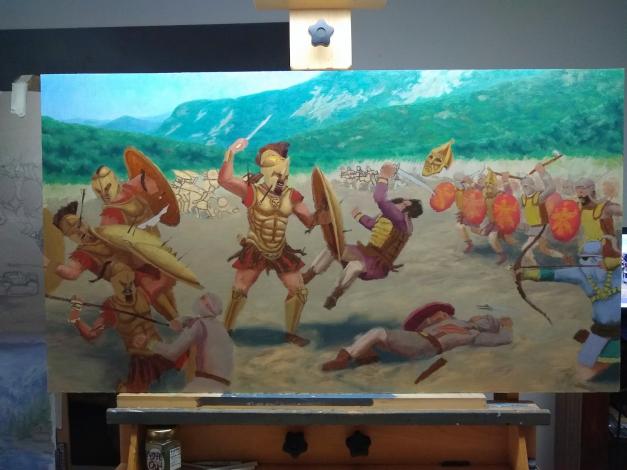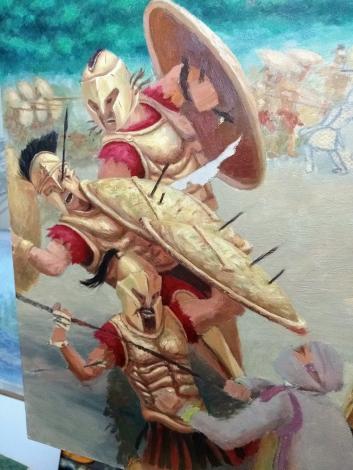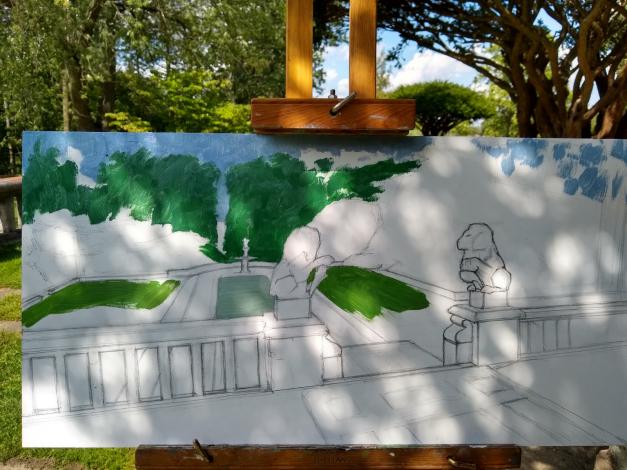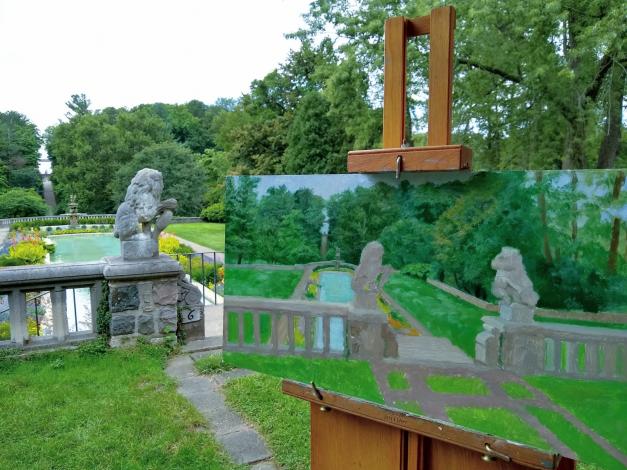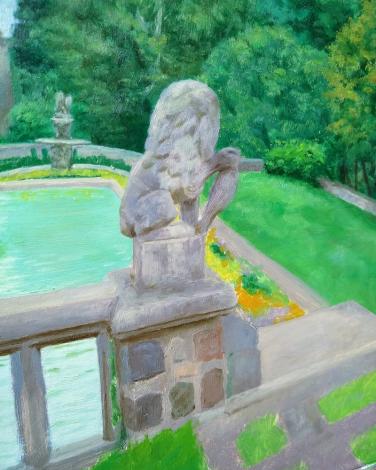Posted on Saturday, October 20, 2018
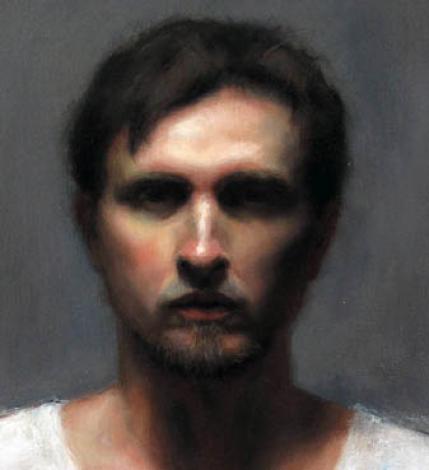
(This continues my interview with artist and teacher, Brian Skol. Click here for Part One.)
Ben: Tell me about your history painting.
Brian: Up until the nineteenth century, there was a widespread opinion that history painting was the highest form of painting. I certainly think that if it’s not the highest form, it’s close to it, and it’s certainly one of the hardest. So, to me, history painting has been the great challenge, and the ultimate challenge of “can I do this? Can I do it well?”
Because, it encompasses all the problems that you have in all painting. Be it landscape painting, or still life painting, or painting figures...it has every single aspect of painting and all the problems with it. In addition to all that, there are the problems of getting people to want to look at it, of creating a deeper narrative, of getting into character. History painting for me has been a lot about getting into character, because every character within a history painting has to be their own person, but not too much that they take away from the larger story. They have to be their own character within the context of a larger story that also works and that is reflective somehow of people today. Can people relate to it today? Why should they relate to it? So there's a lot going on to juggle. I decided, if I'm gonna be well rounded I should be able to wrap my head around doing this.
History itself is very much related to drawing. We invented both to draw a line around our understanding of the world. We invented line to understand form, and we invented history to make sense of the past, to make sense of other people, and a sense of human nature. And so history painting is my way of understanding human nature and all these things along with it.
Ben: How do you go about choosing ideas to turn into paintings? And can you tell me how drawing has helped you with this and the process of creating history paintings?
Brian: Drawing is everything with history painting. No one's ever been able to perfectly recreate a historic battle scene. So all you have to work with is facts. History is reliant on facts, but it can't just be facts. It has to be more than that. So when it comes time to turn the facts into something visual, all you have is drawing, at first. All you have is line and basic light and dark patterns. I tell my students that the drawing is how you analyze things. It’s how you see and understand how everything connects with everything else.
As far as ideas of paintings go, it's one of those things where if I stopped painting for say, a week, I'm bombarded in my mind with narratives and short stories and painting ideas. So to control all that I do a lot of writing. When it comes time to figure something out. I’ll set my mind to something I want to paint. I’ll ask what I want the painting to say or what the theme will be. Then I just sit on it. And then something will click and the image will just appear, like a vision. Sometimes it's complete. Sometimes it's not. Most of time it's not, and you have to piece it together. Some people wait for a flash of inspiration. Inspiration comes, but you have to set the conditions for it to happen in. That involves work. The work is sitting down and meditating on something, and then have the image sort of come forth out of that. So I set myself up with a theme and desire and then the image fills the need.
Other times it's just constant mental television. It's picking a scene out of that. I work on ideas for paintings years in advance, most of the time because I've been doing this for so long. Take the idea that I had for my Shakespeare painting for instance. I knew I was going to do that painting, or something like it, when I was six years old. So these things evolve. Some of the images that I work on have grown slowly over time and changed as I worked them out, until I feel like I'm ready to do them. Then once my skill has caught up it's like, all-right, here we go. Or even if I feel like I'm close, I'll decide I'm close enough to tackle it and jump in.
Ben: Tell me about your painting of the battle of Thermopylae.
Brian: A close friend of mine and I have a fascination with the time period and a love for history, and especially with the history of Sparta and the battle of Thermopylae. It really is a fascinating turning point, or pinching point in history. If you ask the question, what would have happened if they had lost? What would have happened to the entire Western world? This was a critical junction, which is why I think people have been drawn to it. No matter what parts of it are true or not, it's a fantastic story. Having that, on top of this really crucial turning point in history makes it fascinating. My buddy said, “this is probably gonna be the biggest painting I commission you for, but I have to have it. I want the battle.” He came to visit me, and we sat down and I worked it out, and it was a go. It's great to have a supportive friend with similar likes that can pay you to do something you love to do.
Ben: Can you tell me about the conceptualization of the painting and what statement you're trying to make about the battle, and your particular take on his event?
Brian: It’s about the final moments in the battle before the Spartans are overrun, and what is going on in those moments. Because those are the moments that really matter. We all know the Spartans had an extreme culture and society. But, in terms of principle, there is still something to learn there in the sense of sticking together, standing up for something, and holding true to that even as this enemy is overwhelming you.
My friend who commissioned the piece is ex-military and was a medic. He went into the military and became a medic because he wanted to help people. So the piece serves as a statement about always being there, standing firm, and standing strong, even when the situation is the worst it could possibly be.
When he got back from his service, my friend suffered from PTSD pretty severely. We got a lot closer at that time, because I suffer from depression and there are similarities. It got to a point where when one of us is feeling down or having a hard time, the other one was there for support, regardless of what else is going on. With the subject of the painting, there’s always the weight of how huge and legendary the historic event was, and am I ever going to do it justice? But maybe that’s the beauty of it, in that nothing can ever fully encapsulate something like this, and you can’t get it all in one picture. But that sense of standing strong and standing together is what carries through in the picture, to me at least as I’m working on it.
Ben: This and other history painting projects you've completed require tremendous effort and sustained motivation. How have you sustained this motivation?
Brian: Working on something for a long period of time is really it’s own skillset. The last painting I did, The Humbling River, took me a year to complete. That was partly because of other health-related issues, but it was still a full year, and you get tired of looking at it after a while. So you have to find other ways too so look at it, and new ways to see it to make you want to keep working on it.
I try to plan ahead and think in layers. If I can focus on thinking in layers, and thinking in stages, then I can focus on smaller accomplishments. I try to use smaller accomplishments to be able to fuel the larger accomplishment of finishing the whole thing. I also do smaller pieces along the way and on the side. That's where Alla-Prima painting really comes in handy, and it’s nice to just get something out quickly.
"That's not all painting should be, and that's not all painting is."
Personally, I want to be a contrast to all this fast-food painting that is happening currently. There is a lot of painting out there that is quick and easy and gimmicky and it sells, and there's one hundred variations of the same gimmick. That's not all painting should be, and that's not all painting is. I think painting really should be something that takes deeper reflection and takes longer to realize and develop. So I'm just trying to be a contrasting point to that aspect of the culture currently, and that has been a motivating factor to me. For example, I ask “What’s missing (in the world of painting)?”
You could pick a museum in Europe and you could walk through it and you could find at least one painting that exists that no one knows how to do. Not even painting but other works of art. There's still lost knowledge and know-how. And the idea that there is lost knowledge, in the age of the internet can seem kind of weird. So I'm not curious about being able to do something quickly. That I've figured out. I want to be able to piece something together that is far more complicated while having it work, that takes time. I'm more interested in the long game. That's a greater reward for me and I'm more fulfilled by that. But it does take a lot of time, and it can be exhausting.
Ben: I think even from the other end, from the buyer’s perspective and choosing paintings (or drawings) to purchase, own, and enjoy for years or decades. Flashy painting can become stale quickly, while a painting that touches on something deep, like a pivotal battle like this, it’s meaning on a historic and personal level, you can contemplate it for years.
Brian: Not to mention that paintings that convey suffering...help people who suffer, relate. It's not the pretty stuff that people relate to when they're suffering. For me, painting is an answer to suffering. It’s an alleviation of the suffering of life, in general. Everybody goes through it. If you just fill your house with pretty fluffy things, I don't think you're properly reflecting on your life and the nature of suffering.
I'm still learning from my Faust painting. I made that painting and right when I finished it I said, “all-right, I did it.” Years later, though, I'm still thinking about it. I'm still gaining more insight into it, the story, and seeing how it's still relevant today. There are people who are living in hell right now, here on earth. There are people who made deals with the devil and thought they could trick the devil (as a metaphor) and get away with it. So the best paintings speak slowly over time.
Ben: Switching gears to talking about a bit of painting, I've been seeing your progress on a painting at Cranbrook Gardens. I really love the colors in it and the sense of space you’ve created. Can you tell me more about this?
Brian: The Cranbrook event is called Art in the Elements. My girlfriend Laura headed it up and did almost all the work to plan the first one. It's supposed to be an annual event. It's all about artists creating things outside. For them it's floral sculptures. This year I was able to bring in a number of other painters. So the goal is to build a big community event combining making things and loving nature.
The painting itself has been my way of processing a trip that I took to Washington D.C. recently and a visit to the National Gallery and the National Portrait Gallery. This is not directly related to drawing, but one of the things that I noticed, more than anything on the trip, was the beautiful sense of harmony and color in some key paintings in those collections. This resonated with me because once you figure out how to draw things, it is no longer as mysterious, but it unlocks other mysteries.
The biggest mystery to me, at the time, was looking at the use of color and the use of greys in the service of getting other parts of the painting to pop with color that gets your attention. Values are an important factor in that, and design and composition as well, but the use and control of color saturation to get things to pop and give me a reason to walk up to them was striking. So I was looking at all these paintings by the Hudson River school, Frederic Church, Thomas Moran, and the way they handled saturation, I realized instantly what more I need to learn and focus on.
Ben: Can you tell me about any upcoming workshops or how we can see more of your work?
Brian: I have two upcoming workshops at the Ann Arbor Arts Centre, October 19-21 and November 9-11. I have my website up at brianskol.com. I have an Instagram account. I also have a Patreon.
Ben: Thank you so much!
